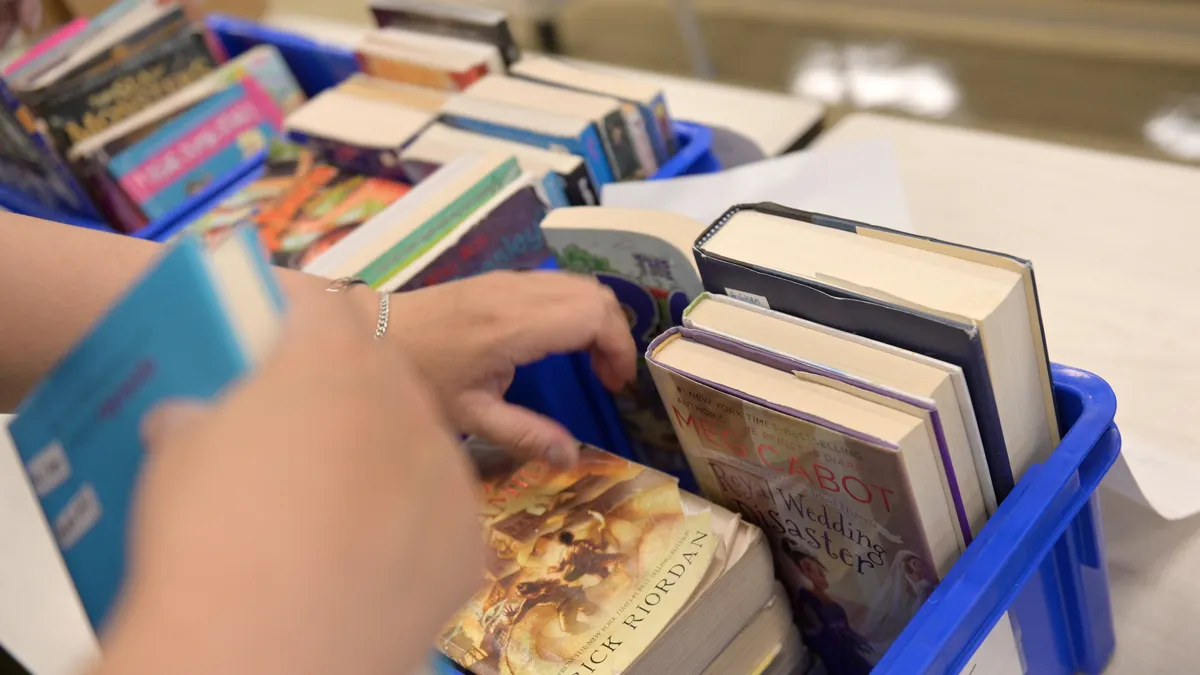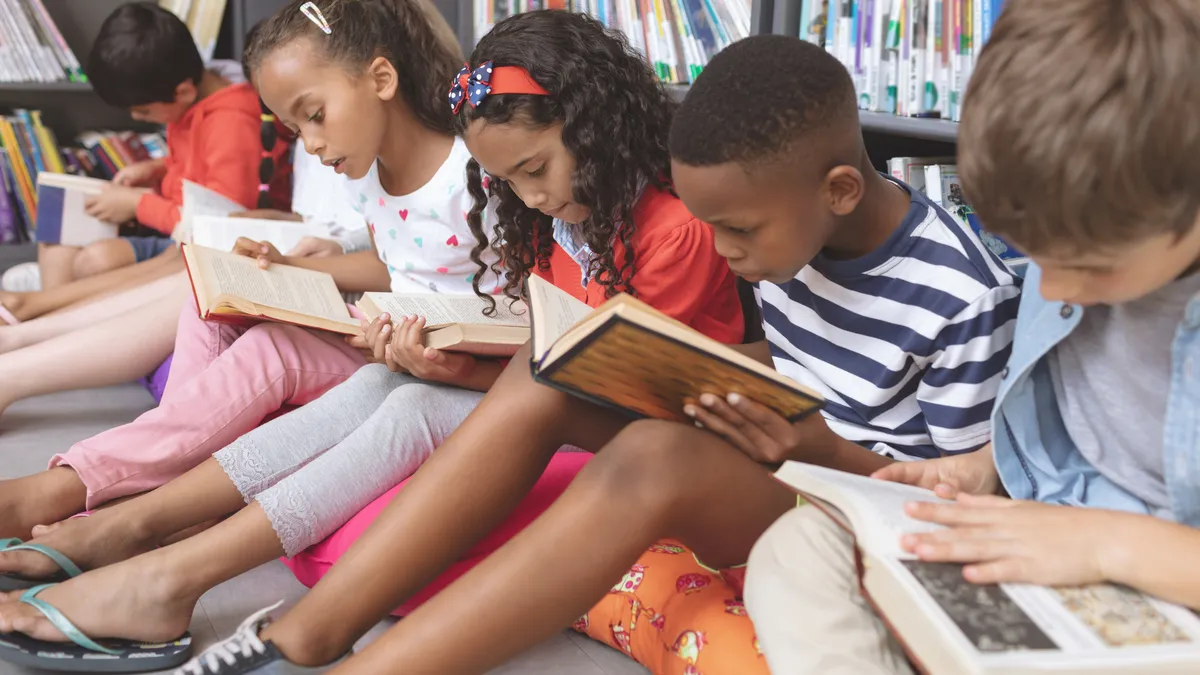An effort is underway to improve reading instruction and interventions for older students that even organizers say is ambitious for its involvement of all education partners — including parents, students, educators, researchers, ed tech developers and more.
The mission, which just got started and is expected to last at least four years, seeks to combine existing and yet-to-be discovered evidence of effective reading instruction and learning strategies for students who identify as Black, Latino, Native American and those living in poverty.
Reading Reimagined aims to reduce the reading gap by identifying effective curricula and teaching strategies for students in grades 4-8. Foundational and comprehension skills will be the focus of the research and development project, as will students' self-efficacy and personal connections to literacy.
The effort is being led by the Advanced Education Research and Development Fund, a nonprofit that supports research identifying challenges and opportunities to student learning. It is the third inclusive R&D project undertaken by AERDF. The two other projects focus on asset-based assessments and math instruction.
Reading Reimagined will attempt to simplify reading interventions by taking existing knowledge about key elements of reading proficiency, such as decoding and phonics, and new research about reading struggles and solutions for older students and combine that with practical applications teachers can use in the classroom, said Project Director Rebecca Kockler.
"We have a lot of kids who need us to have better answers, and there's not a good body of evidence, but there's some sort of bits and pieces of research to build from," said Kockler, who is a former assistant superintendent of academic content for the Louisiana Department of Education. "That's the kind of problem we want to tackle."
Improving reading gaps
While there is an abundance of evidence-based research on effective reading instruction techniques, much of it is focused on younger readers and students who identify as White and living with higher-income families.
Students who do not learn to read proficiently by 3rd grade often fall behind academically. Reading interventions for older students tend to mimic the way reading is taught to 1st, 2nd and 3rd-graders, and with the assistance of leveled books targeted for younger kids that can make older students embarrassed and uncomfortable, Kockler said.
Only 35% of 4th-graders and 34% of 8th-graders scored at or above proficient in reading in the 2019 National Assessment of Educational Progress. The proficiency rates for 4th- and 8th-grade students who identify as Black, Latino, Native Hawaiian or American Indian were lower compared to students who identified as White, Asian or Asian/Pacific Islander.
Kockler said while some of the deep-research reading approaches that will evolve from the project could apply to students from all races and backgrounds, the researchers will focus on Black, Latino and Native American students.
"We have a group of students who are so sort of dramatically underserved in our country, we want to make sure first and foremost we have good answers for them," Kockler said.
For example, a part of the project may investigate how different dialects influence the learning of decoding skills.
"We need to understand how will we teach this in a way that honors those dialects and teach students in a unique and meaningful way to make sure that they really master their reading foundational skills," Kockler said.
Sue Pimentel, a member of Reading Reimagined's Advisory Council, said the project could have significant positive impacts on reading instruction. Teachers tell her they struggle with translating existing research-based effective practices into classroom practice or tools they can use, she said.
Pimentel anticipates the tools and techniques produced by the Reading Reimagined effort can provide "a whole new way of helping teachers and schools out there do better by their students."
The 'right agenda'
The work could result in an open-sourced curricula created by ed tech developers, as well as techniques for teaching that are actionable and practical.
Some of these interventions may be very specific to certain student groups, such as English learners or specific regions, but may also be applicable to a broader group of emerging readers.
The evidence-based reading instruction discoveries could also greatly improve older students' emotional well-being, said Pimentel, who was the lead writer of the English Language Arts and Literacy Standards for the Common Core State Standards Initiative. When an older student can't read proficiently, they think there's something wrong with their brain or that they are less intelligent than peers who read at grade level, she said.
"That's the problem," Pimentel said. "It's that they likely didn't get systematic explicit phonics instruction and how do we do it in a way that sort of honors and affirms their identity and makes them understand that because I think a lot of adults don't understand that when students can't read. Well, it's not about their brain. It's about how we've taught them."
While Reading Reimagined's goal of helping every student become a successful reader may seem aspirational, it is possible, Pimentel said.
"We know the tools," she said. "Now we have to figure out a way to put them together. It's an aggressive agenda, but it's the right agenda."
Affirming readers' identities
To figure out where to start when creating this project, leaders surveyed and interviewed students and teachers, asking about their most difficult challenges and what resources they lacked. Researchers, neuroscience experts and others were also consulted. Their input led to the project's three related focus areas where organizers hope can make the most improvement in closing reading achievement gaps.
Those areas include:
- Self-efficacy. Educators will help students identify as readers through the understanding that they are capable of building knowledge and expertise through texts, as well as make connections about the purpose of reading and communicating in their lives in and outside their classrooms.
- Background knowledge as a tool for reading comprehension. Expanding students' knowledge base and vocabulary in a literacy curriculum can help build their comprehension of complex texts. Through knowledge progressions, text selection and language supports for text access before and during reading, the project's leaders say readers will have increased proficiency of words, as well as knowledge of the world they live in.
- Foundational skills for students in grades 4-8. Project leaders aim to understand the best approaches for reading progression, content, pace and approach when teaching older learners how to read proficiently.
The project is starting with the creation of an Educator Advisory Council to provide oversight and feedback about the work. School communities will also participate by partnering with researchers and product developers to prototype and evaluate tools and techniques.
It's unclear at this point exactly what will develop but organizers are hopeful this work will lead to reading interventions that are less disjointed and more precise.
"This comes from a place of feeling like there are just real challenges here that are hard to solve," Kockler said, "and hopefully we can contribute to making that easier for teachers and school systems and kids and families that are really pursuing this stuff and struggling sometimes to find what they need to do it."






















